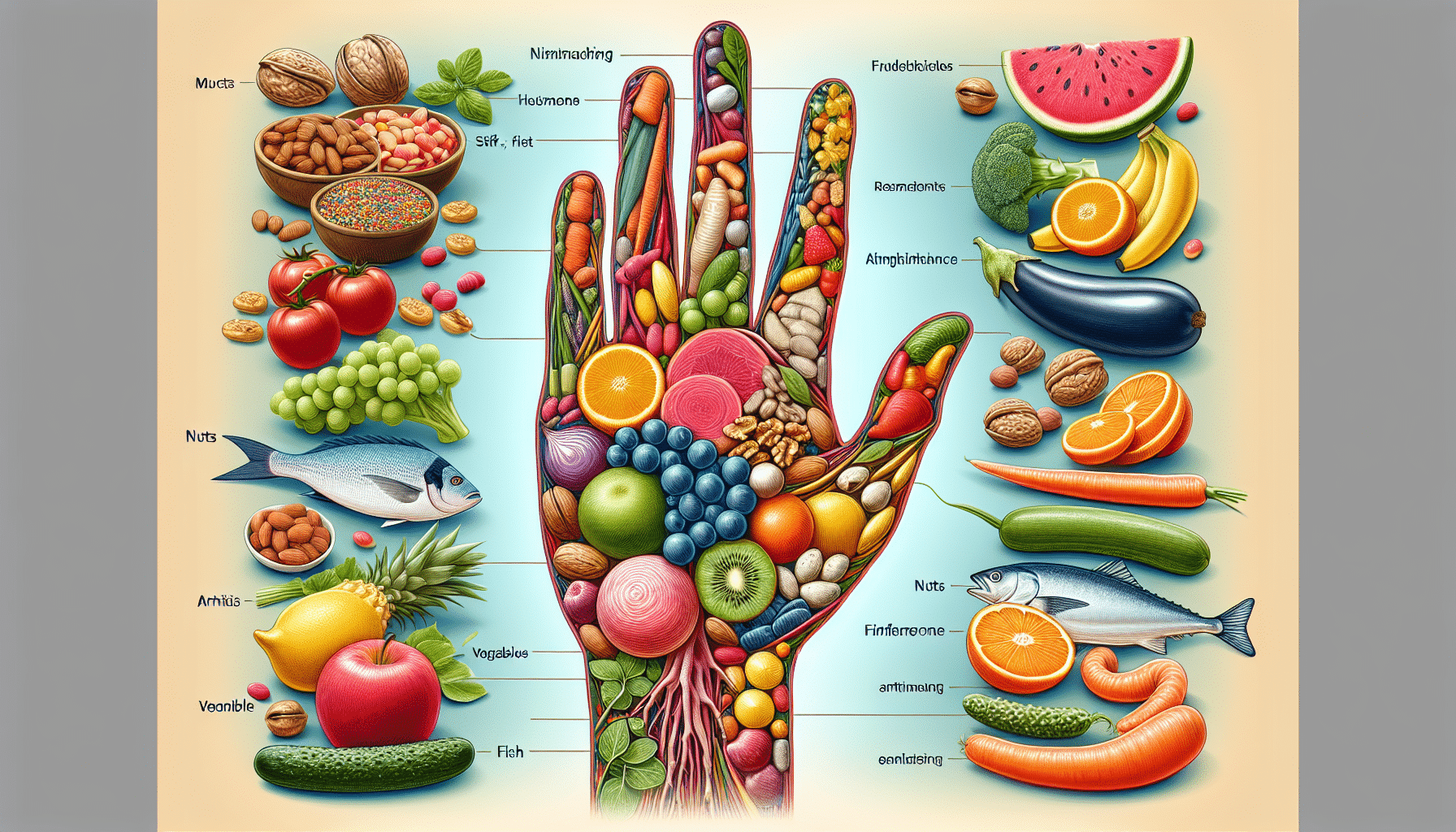
Living with arthritis can be a challenging and painful experience, but there are ways to reduce inflammation naturally.
This article will provide you with an array of top strategies that can help alleviate the symptoms of arthritis, allowing you to live a more comfortable and pain-free life.
From incorporating anti-inflammatory foods into your diet to practicing regular exercise and managing stress levels, these natural strategies are designed to target the root causes of inflammation and provide effective relief.
By making these simple lifestyle changes, you can take control of your arthritis and improve your overall well-being.
Understanding Arthritis
Arthritis is a common condition that affects millions of people worldwide. It is characterized by inflammation and stiffness in the joints, leading to pain and reduced mobility.
There are different types of arthritis, each with its own unique causes and impacts. Understanding the various aspects of arthritis is crucial for effectively managing the condition and improving your quality of life.

This image is property of images.pexels.com.
Different types of arthritis
Arthritis is not a single disease but rather a term used to describe a group of conditions that affect the joints.
Some of the most common types of arthritis include osteoarthritis, rheumatoid arthritis, gout, and psoriatic arthritis.
Each type has specific symptoms and underlying causes, requiring different approaches to treatment and management.
Osteoarthritis is the most common form of arthritis, characterized by the breakdown of cartilage in the joints. Rheumatoid arthritis, on the other hand, is an autoimmune disease that causes inflammation and damage to the joints.
Gout is a type of arthritis caused by excessive uric acid buildup, while psoriatic arthritis is linked to the skin condition psoriasis.
Causes of arthritis
The exact causes of arthritis vary depending on the type of arthritis. For osteoarthritis, factors such as age, joint injury, and obesity play a significant role. Rheumatoid arthritis, on the other hand, is believed to be caused by a combination of genetic and environmental factors, triggering an immune response that attacks the joints.
Gout is primarily caused by high levels of uric acid in the blood, leading to the formation of urate crystals in the joints. Psoriatic arthritis is associated with psoriasis, a chronic skin condition, and is believed to result from an abnormal immune response.

This image is property of images.pexels.com.
Impact of inflammation on arthritis
Inflammation is a key factor in the development and progression of arthritis. When the joints are inflamed, they become swollen, painful, and stiff. The inflammation can also lead to the destruction of cartilage and bone, resulting in significant joint damage and deformity.
Inflammation in arthritis is typically caused by an overactive immune system or the buildup of certain substances in the joints. It is essential to manage inflammation effectively to reduce pain and slow down the progression of the disease.
Diet and Nutrition
The role of diet in managing arthritis cannot be overstated. Certain foods can either contribute to inflammation or help reduce it. Making informed dietary choices can have a significant impact on managing arthritis symptoms and improving overall joint health.
Foods to include in an anti-inflammatory diet
When managing arthritis, it’s crucial to include foods in your diet that have anti-inflammatory properties. These foods can help reduce inflammation in the body and provide relief from arthritis symptoms.
Some examples of anti-inflammatory foods include fatty fish like salmon, nuts and seeds, fruits and vegetables high in antioxidants, and whole grains.
Fatty fish are rich in omega-3 fatty acids, which have been shown to reduce inflammation. Nuts and seeds contain healthy fats and antioxidants that can help fight inflammation.
Fruits and vegetables are packed with vitamins, minerals, and antioxidants that support overall health and reduce inflammation. Whole grains, such as brown rice and quinoa, are high in fiber and can help control inflammation.
Foods to avoid that may increase inflammation
Alongside incorporating anti-inflammatory foods, it’s equally important to avoid certain foods that can worsen inflammation and aggravate arthritis symptoms.
These foods include processed foods, sugary snacks and beverages, red meat, refined carbohydrates, and foods high in trans fats.
Processed foods and sugary snacks often contain unhealthy fats, added sugars, and artificial ingredients that can increase inflammation. Red meat is high in saturated fats, which have been linked to inflammation.
Refined carbohydrates, such as white bread and pasta, can cause spikes in blood sugar levels and promote inflammation. Foods high in trans fats, such as fried and commercially baked goods, can also trigger inflammation in the body.
The importance of a balanced diet
Maintaining a balanced diet is crucial for overall health and well-being, especially for individuals living with arthritis. A balanced diet provides essential nutrients that support joint health and overall body function.
Including a variety of foods from different food groups can ensure that you receive all the necessary vitamins, minerals, and antioxidants needed for optimal health.
A balanced diet should consist of lean proteins, such as chicken, fish, and legumes, which provide the necessary amino acids for tissue repair and maintenance.
Whole grains, fruits, and vegetables should also make up a significant portion of your diet, providing essential fiber, vitamins, and minerals. Healthy fats, such as olive oil and avocados, should be included in moderation to support heart health and reduce inflammation.
Exercise and Physical Activity
Regular exercise is an essential component of arthritis management. Engaging in physical activity can help strengthen the muscles surrounding the joints, improve flexibility, and reduce pain and stiffness.
However, it’s important to choose exercise types that are suitable for individuals with arthritis to avoid further joint damage.

Benefits of regular exercise for arthritis
Regular exercise offers numerous benefits for individuals living with arthritis. It helps maintain joint flexibility and range of motion, reduces pain and stiffness, strengthens muscles, and improves overall physical and mental well-being.
Exercise also plays a crucial role in weight management, which is particularly important for arthritis sufferers.
Engaging in regular exercise can also help manage other chronic conditions often associated with arthritis, such as heart disease, diabetes, and obesity.
Additionally, exercise promotes the production of endorphins, which are natural pain relievers and mood boosters.
Suitable types of exercise for arthritis sufferers
When choosing exercises for arthritis management, it’s important to focus on low-impact activities that put minimal stress on the joints. Some suitable types of exercise for arthritis sufferers include walking, swimming, cycling, and water aerobics.
Walking is a low-impact exercise that can be easily incorporated into daily routines and helps maintain joint mobility.
Swimming and water aerobics are excellent options for individuals with arthritis as they provide resistance without putting stress on the joints. Cycling on a stationary bike or outdoor paths offers cardiovascular benefits while being gentle on the joints.

Low-impact exercises to reduce joint stress
In addition to low-impact cardiovascular exercises, incorporating specific low-impact exercises can help reduce joint stress and improve muscle strength and flexibility.
Some examples of low-impact exercises for arthritis management include yoga, tai chi, and strength-training with light weights or resistance bands.
Yoga and tai chi focus on gentle movements, stretching, and deep breathing, promoting relaxation and improving joint flexibility. These exercises also help increase muscle strength and balance, reducing the risk of falls.
Strength-training exercises with light weights or resistance bands can be tailored to target specific muscle groups, providing stability and support to the joints.
The importance of stretching and flexibility exercises
Stretching and flexibility exercises are essential for maintaining joint mobility and reducing stiffness.
They can also help prevent injury and improve overall physical performance. Stretching exercises involve gently elongating the muscles and tendons, improving flexibility and reducing muscle tension.
Including stretching exercises in your exercise routine can help relieve arthritis-related stiffness and increase joint range of motion. It’s important to start with gentle stretches and gradually increase intensity to avoid strain or injury.
Stretching should ideally be done after a warm-up or as part of a cool-down routine after exercise.







